
A giant pile of bones
One of the primary goals of flying the team to Kenya for ten weeks, was to have us consult local resources that we could not find by simply surfing the net. To this end, we arranged a meeting with the Catholic Diocese of Nakuru to discuss the use of bone char (ground-up animal bones) as a fluoride removal agent for drinking water. This meeting would involve traveling three hours north to an area rife with national parks, flamingo-fringed lakes, and other attractions. The logical choice, therefore, was to position the meeting on a Friday and take the rest of the weekend to explore the wonders of the Rift Valley.
The faculty had informed Scott on Thursday afternoon that he would have another meeting in Nairobi at the same time; Ryan and Willems each had severe stomach complaints and would be spending the morning in the hospital; this left Ashley and me to go up early and meet with the diocese. We found a speedy matatu around 8 and, despite around ten police stops in route, reached Nakuru before 11. Our bus flew right by the poorly-marked office, so we went to the station and returned some minutes later in a tuk-tuk. It was an interesting operation; one shed housed a few tons of animal bones recently delivered from the slaughterhouse (ten cents for one kilo of camel, sheep, goat and cow bones in case you were interested), where small birds feasted on whatever gore was still attached. Nearby, a furnace heated the bones to increase their absorption, and a grinder reduced them to several different granularities. We bought 15L of fine-grain bone char and left it at the gate where we could collect it on Sunday.
Just next door was the Hyrax Hill prehistoric site. This was essentially a big hill with a good view and a few anthropologically significant rock circles. The museum had some interesting exhibits; the highlight was a display featuring a plastic spitting cobra, where a little sign read "press this button to provoke the cobra"; upon pressing the button, the cobra proceeded to spit a continuous stream of water at me (which was fortunately intercepted by the glass wall of the case and resulted in no debilitating eye damage). Near the museum was an enclosure with a great many hyperactive tortoises.
Not wanting to walk around the park's circuitous access road, we bushwacked down the hill to the highway. We noticed a dirt road extending from here towards Nakuru National Park, and decided to attempt to sneak in. This would have been an easy matter, if it were not for the high electric fence that circled the park, and the deadly buffalo that stood grazing just beyond it. We followed the fence through several villages where white people were clearly a very infrequent occurrence.
Back in town, we attempted to find a way to camp inside the park, or find any other accommodation away from the bustling center; we eventually negotiated a tour that would take the five of us on a six-hour safari and would include a home stay with dinner and breakfast for just under $100. We arranged for the driver to take us to the park to figure out if we could in fact get a reasonable admission rate. The entrance to the park was enticing indeed; a large grassy crater promised some intriguing hiking options, and monkeys, zebras, and buffalo frolicked in the bright green grasses. However, when we got to the ticket office, the attendant simply laughed at the letter we toted around to prove our residency, and announced that we would get no discount below the normal foreigner price of $60. This essentially killed off our safari idea, so we returned to town to formulate a backup plan. For around ten bucks, we secured a four-bed room (we would draw straws to see who would be sleeping on the floor) on the roof of one of the highest buildings in town. The other three finally arrived, after some uncomfortable lab tests and an unreasonably long matatu ride, around six that evening.
We got up first thing in the morning to hike to the acclaimed Menengai Crater some 10km north of town. We had been told there was a haunted cave and tarzan rope swing somewhere on the way, but we failed to find a guide and apparently took the wrong route. The joy of climbing to the crater was greatly diminished by the fact that we were on a road the whole way and it would have been an easy matter to hire a taxi all the way to the top. We seemed to pick up additional children from every village we passed, and soon had an entourage of about twenty of them following us up. Scott was the focal point of their attention, as he pointed his camcorder with one hand and fiddled with his Ipod Touch with the other; the rest of us looked on with apprehension, knowing full well that there had been plenty of muggings here in the past. As we neared the top, a few older teenagers yelled at the kids and they dispersed, leaving just us and them; as we continued walking along, we casually picked up a couple large stones, but fortunately never found the opportunity to use them. The views from the point were fairly spectacular, though the crater was far larger and less defined than we had expected; besides a large black streak where the lava had flowed, there was little evidence of volcanic activity.
There was an obvious trail from the top that edged around the escarpment and continued to the highway far below; this turned out to be infinitely more scenic than the way up, and we even found the entrance to a lava tube (just one of a whole system of caves that supposedly riddle the mountain). Reaching the road, we immediately hopped on board a matatu and got back to town in around fifteen minutes for only twenty shillings.
We got lunch at a small café and got a matatu bound for Naivasha; we convinced the driver to stop for five minutes at the Catholic diocese office and let us pick up our bags full of bone dust. From the next stop, we picked up another van that ran along the edge of Lake Naivasha; this one had a TV screen with music videos, which might explain how I was sufficiently distracted to leave one of our two bags of bone char when we got off - the guilt for what would surely be a terrific impairment to my team's research would stay with me all weekend.
We stayed at the incredibly scenic Fisherman's Camp on the shores of Lake Naivasha. At around 700 shillings per person, renting a tent and camping on the expansive lawn was a tad overpriced, and we had no sleeping bags or other gear anyway, so we paid a dollar extra and got a large, fully furnished banda (hut) with an attached bath. The management put out monkey food (sliced-up potatoes), so several species of monkeys scurried about the place at all hours of the day. At night, hippos came up to graze on the lawn; this had become a problem when one hippo trampled a tent and killed its inhabitant a few years ago, so an electric fence was installed to separate the guests from the blood-thirsty beasts. Our neighbors included a Canadian/South African couple that was spending more than a year overlanding it from South Africa to Britain (and was planning to drive through both Sudan and Saudi Arabia!); they had shipped a 4WD from London and had outfitted it with a pop-up tent, stove, safari snorkel, spare batteries, jerry cans, and all other essential gear. They bought us beers and we watched cricket and rugby games beamed from Europe while they reminisced about their crazy adventures through most every corner of the southern half of the continent. Unable to get to any sort of civilization after dark, we had to settle for paying $5 for a meat pie and mashed potatoes; the overlanders were kind enough to make us some popcorn on their stove.
Sadly, we heard no hippos in the middle of the night, and had no reason to leave our hut until seven the next morning. We arranged with the guard to rent bikes for 500 shillings a piece, grabbed some breakfast at a café down the road, bought enough cookies and cakes to last us the day, and peddled to the entrance of Hell's Gate National Park. We once again tried to finagle our way in for residents' rates ($3), but once again failed; luckily, this particular park only costs only $25 for foreigners and we begrudgingly ponied up the dough. A cartoon map at the entrance had a caricature of the devil greeting hesitant tourists with the words "welcome to hell!"
At most every other game park in Africa, you're required to have some sort of vehicle that can protect you from the attacks of vicious, wild animals, and in many cases you need a guide as well. Hell's Gate is one of the few where you need neither, and all of the park's hundred or so kilometers of road can be negotiated (reasonably) safely by bike or on foot. Leaving the guard post, the ride was instantly spectacular; a giant, multi-hued cliff ran along the plains to one side and a huge rock spire rose in front of us. Giraffes and zebras galloped alongside us, simultaneously terrified and intensely curious. I tried my hand at climbing Fischer's Tower and quickly decided that, while there was an easy 5.6 route leading to the top, it would be stupid to attempt it without rope. We noted a point on the map marked as the Obsidian Caves, and envisioning large caverns of translucent rock, we immediately left the main circuit to follow the much longer, more arduous buffalo circuit to the center of the park.
The caves were only about six kilometers away, but progress was slow as we constantly stopped to snap pictures of antelopes, kudus, warthogs, and other critters; at one point, Ryan decided to spook a herd of assorted plains dwellers, and Scott got the video as the whole menagerie took off at a gallop. The 'caves' (at least those that we found), turned out to be only alcoves with a collection of animal and human poo, but there was plenty of obsidian in the walls of the cliffs. Following the circuit around, we came to a steep, rocky incline and walked our bikes for about two hours uphill. This was followed by a death-defying hour-long descent; all of us wiped out a few times, but fortunately we all reached the bottom without any serious injuries. Scott taped his camcorder to his handlebars to capture the whole thing.
The main attraction of the park begins at the central ranger station. Our cookies and water had run out on our absurdly difficult and unnecessary detour, so we paid top dollar to get cheesy potatoes, mandazi (triangular donuts) and around ten half-liter mineral waters. We left our bikes with the rangers and descended into the first of the gorges. We decided to forego the 1500 shilling guide fee and figure it out on our own; as I led the team down a perilous series of steps hewn into the rock, and edged along the walls of the slot canyon, they quickly began to loose faith that we had any chance of finding the right way. A young child by the name of Moses came to our assistance; he didn't speak any English and couldn't offer any explanation of where he was taking us beyond the words "hot springs", so we just followed, hoping that we would return by nightfall. The trail we took was one of the most scenic and enjoyable I've done; there was plenty of scrambling into and out of canyons, and at one point we even had to take a flying leap through a hot waterfall. We never found anything that I would label as a hot spring, but we did make it to an area called Hell's Kitchen, which had plenty of steaming vents, boiling mud, and the like. We returned by a similar route and got on our bikes to ride the 15 kilometers back to camp. The animals were out in force, and much less timid than those we had seen that morning; zebras and giraffes ran across the road right in front of us, and a pair of warthogs continued mating unperturbed as we passed. We were advised to speed past the herds of buffalo that now filled the fields, as they wouldn't hesitate to charge and kill us.
We got back to camp and immediately jumped on a matatu to Naivasha. Since it was getting late and matatus have a nasty reputation for getting hijacked once the sun goes down, we had planned to get a direct seven-person shuttle back to Nairobi. But upon getting off the first bus, we were immediately directed to a standard issue, as-many-as-can-fit matatu. It was a very slow and uneventful ride back - until we reached center city; Scott sat up front and somehow convinced the driver to take us directly to our hotel. Despite the protests of the other passengers, we took a kilometer-long detour from the normal route to go straight to our doorstep, and to accent the zaniness of it all, the driver clipped the huge metal gate guarding the Y and sent it slamming into the adjacent concrete wall. On this particular evening in Nairobi, five mazungus had hijacked a matatu.

A giant pile of bones

Bone grinder

Unusually active turtles

At the top of Hyrax Hill (no hyraxes in sight)

From our $10 penthouse hotel room

Looking towards Lake Nakuru

Menengai Crater
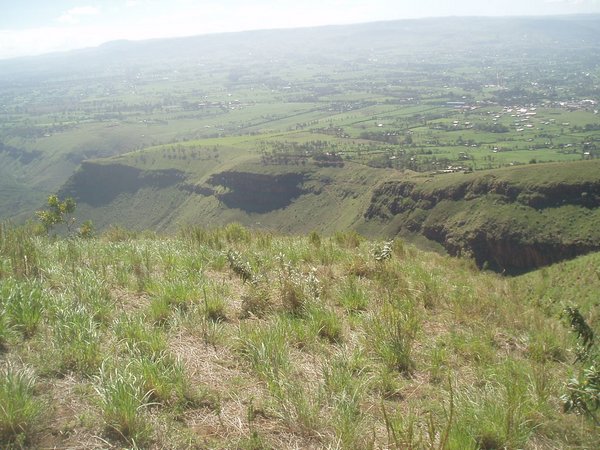
The hike down
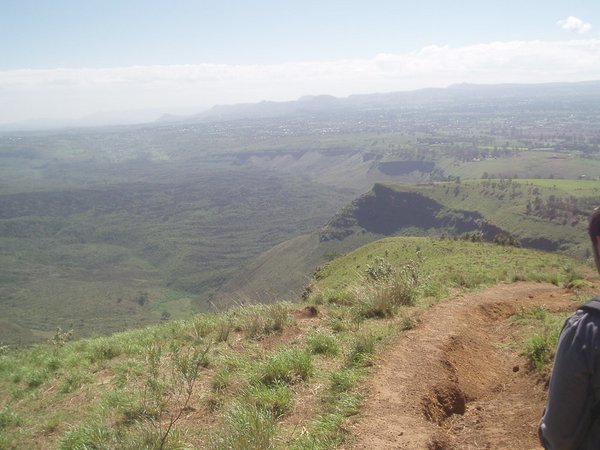

Random village

The Fishermens Camp dock

Lake Naivasha
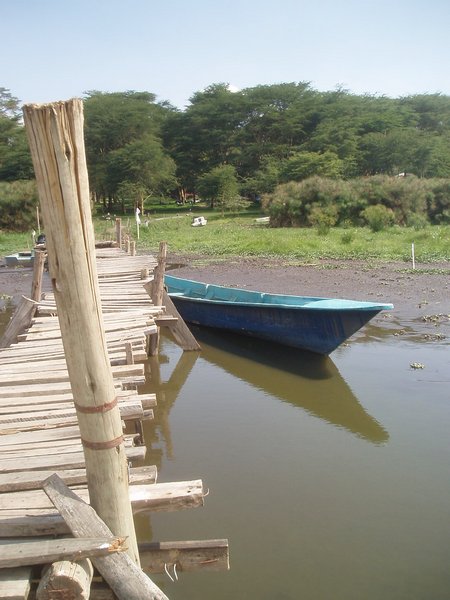
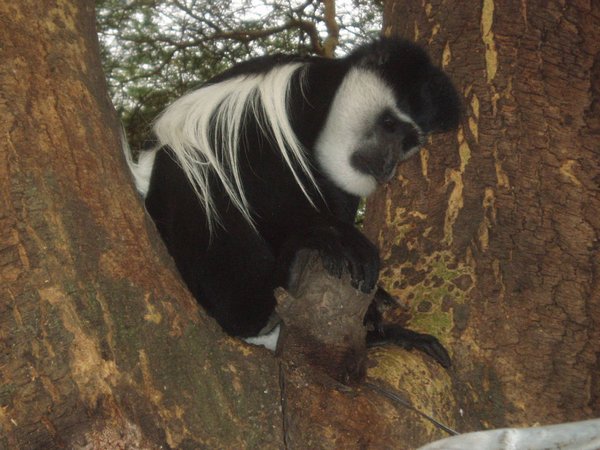
Somewhat wild monkeys


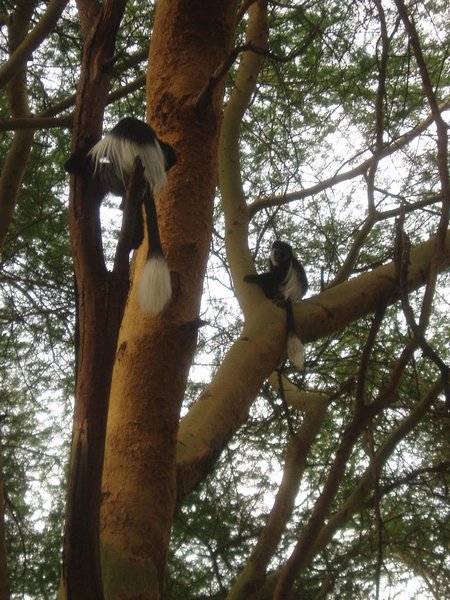
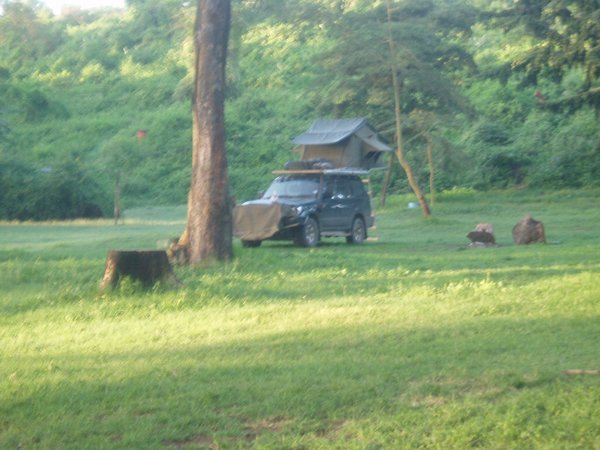
Hands down, the best way to see Africa
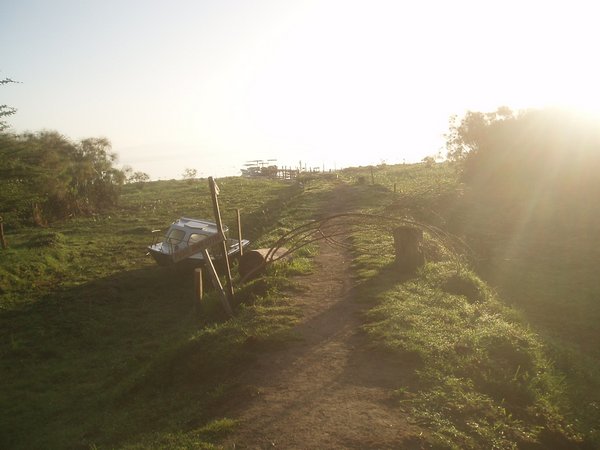
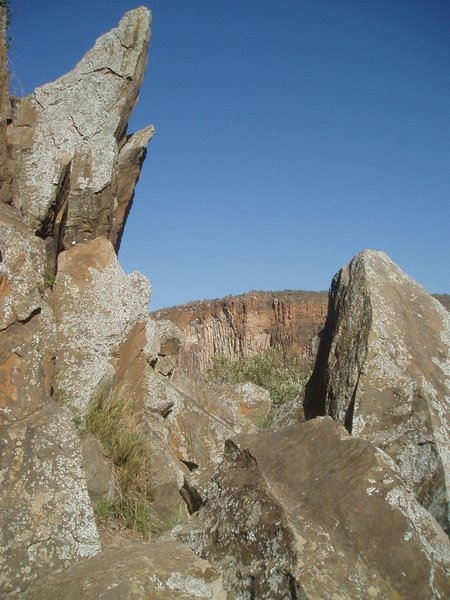
The rocks of Hells Gate

Giraffe we chased across the savannah
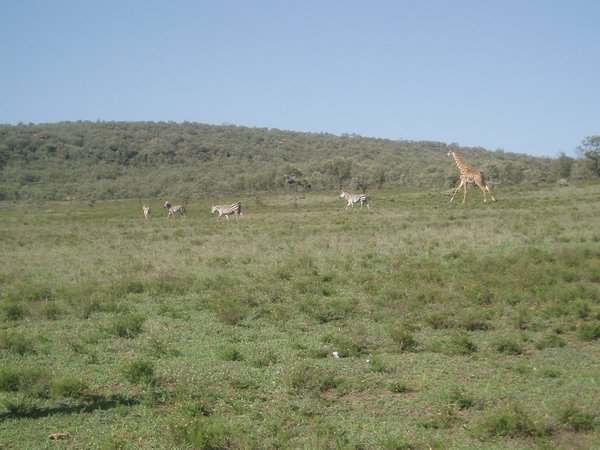
Giraffe hunting zebras

Warthog family
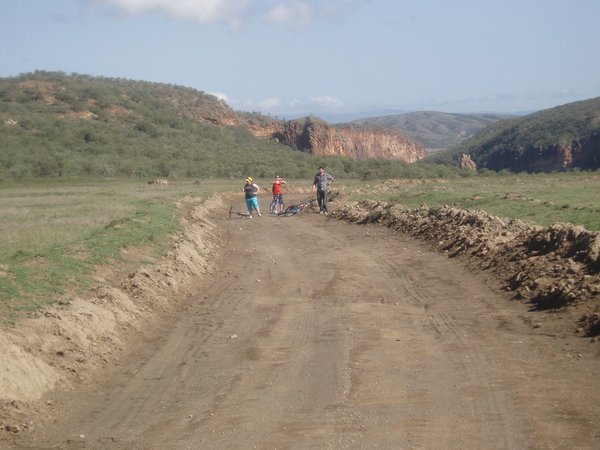
Our group of indefatigable cyclists
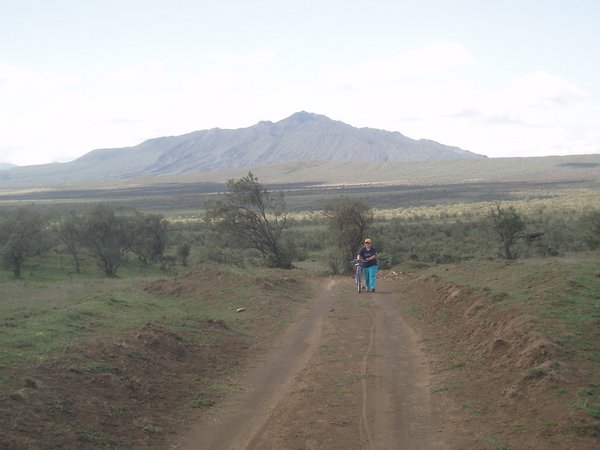
Going uphill on the Buffalo Circuit
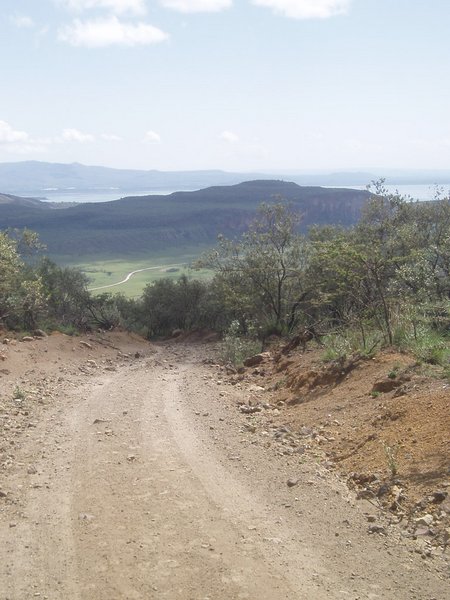
Going downhill

Scariest bike trail ever
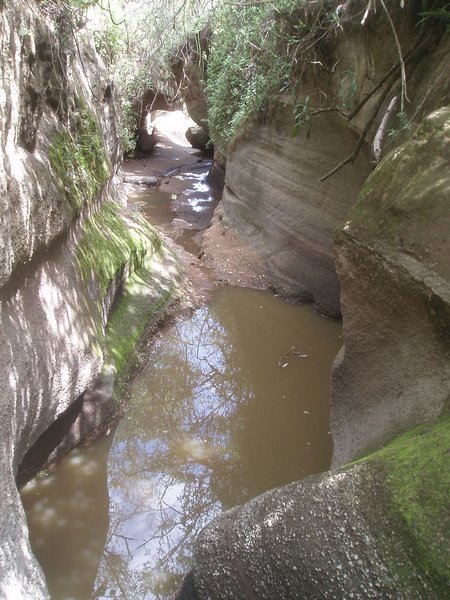
First of the slot canyons
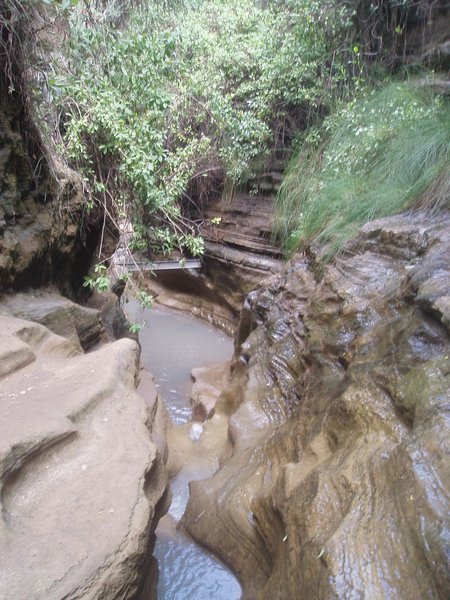
This will require some technique


A larger canyon
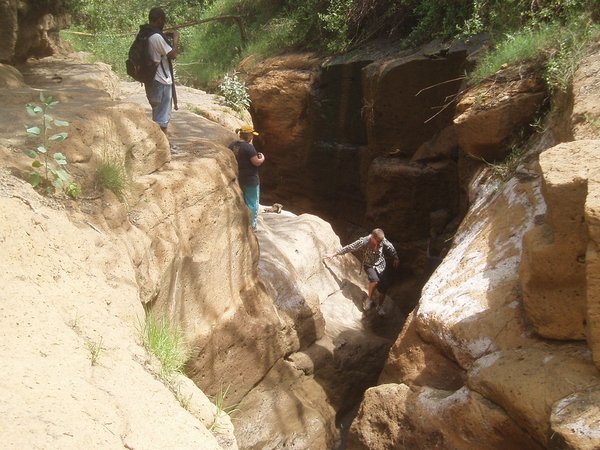


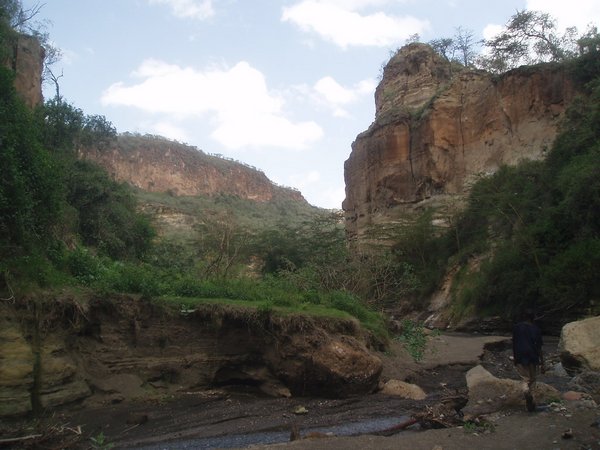
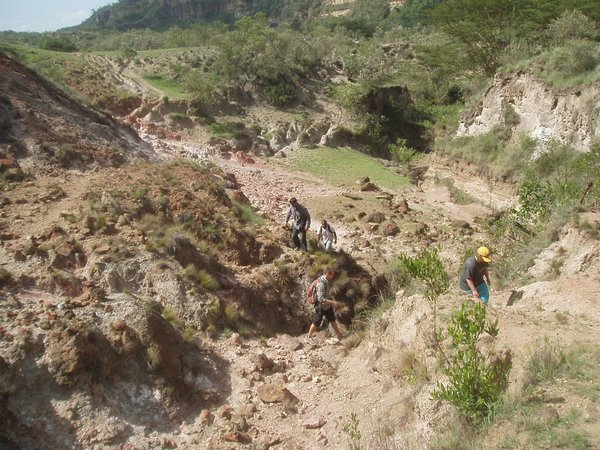
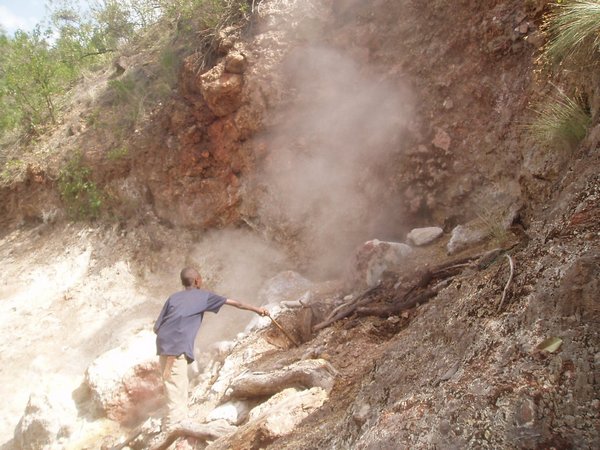
Playing with the geothermal vents
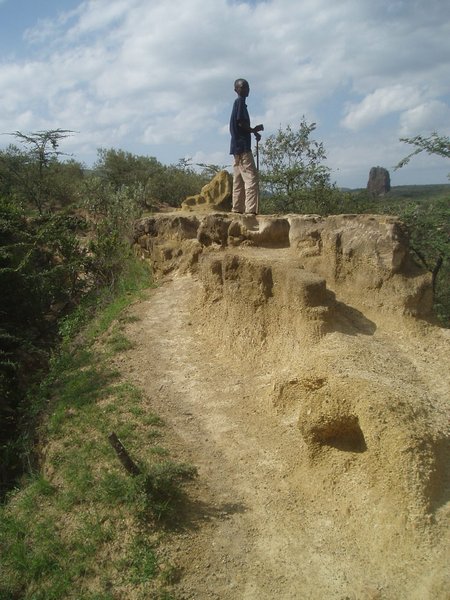
Moses and Central Tower
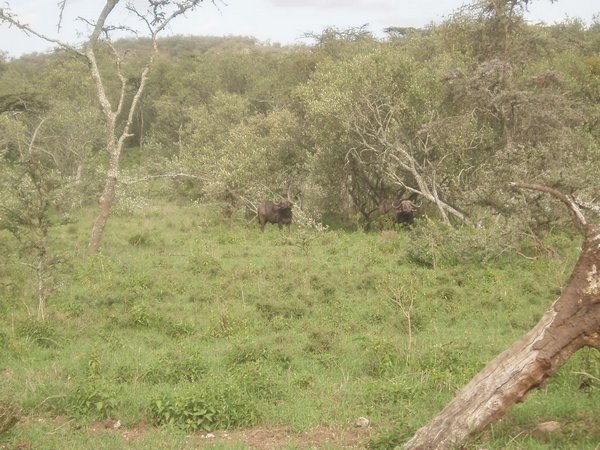
At some point while taking this picture of the world's most dangerous animal from a mere 50 feet away, I realized this might just be a terrible idea.
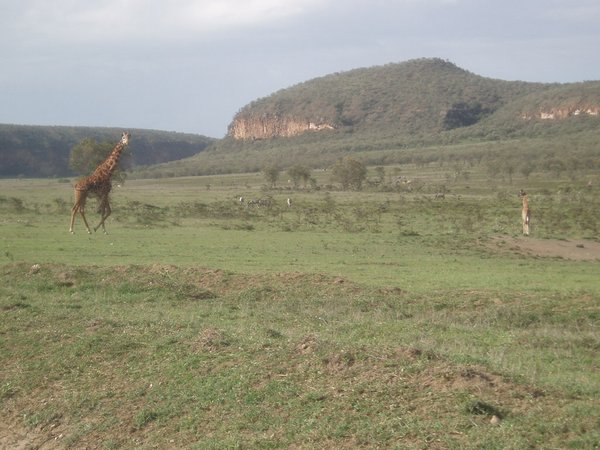
Male giraffe and child
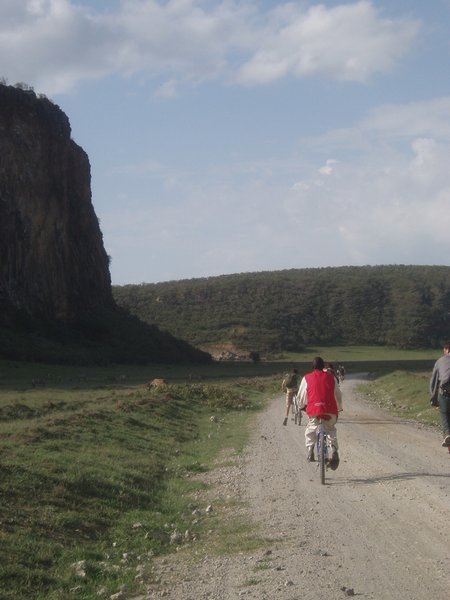
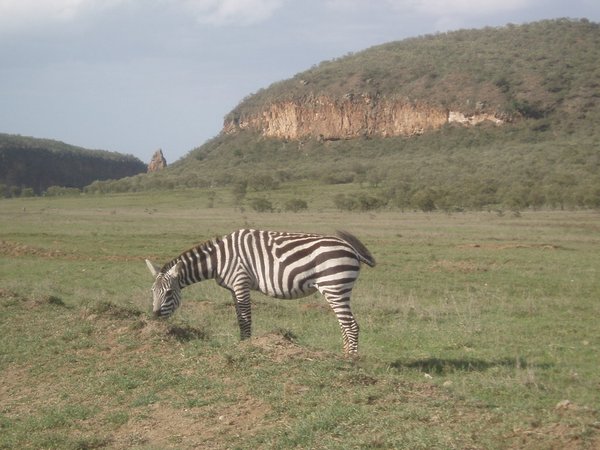
Close enough to pet

Fischer's Tower (open to rock climbers!)